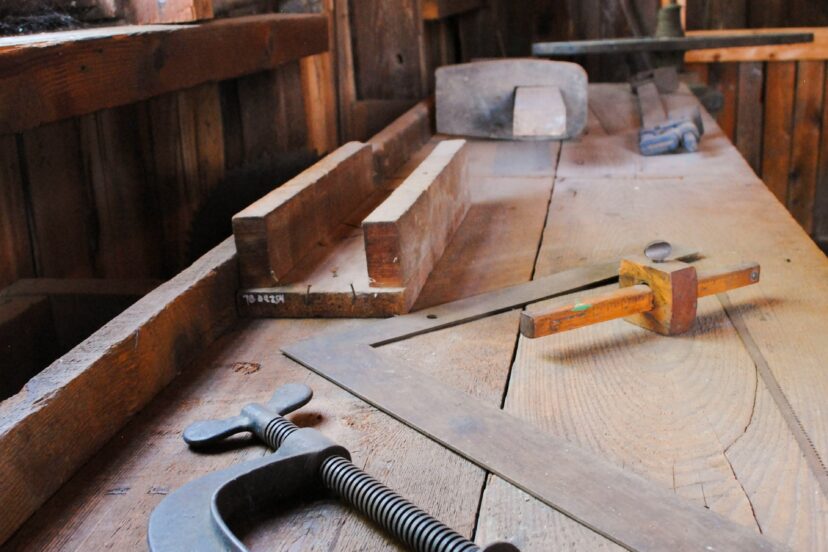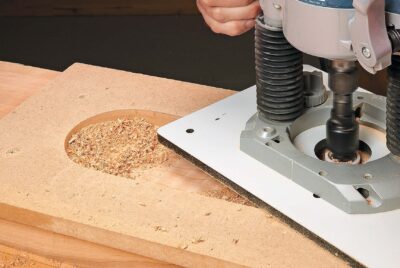Your Woodworking Shop Oasis: Crafting Your Dream Step-by-Step Guide For Beginners
Crafting Your Woodworking Shop Oasis: A Step-by-Step Guide
Imagine a sanctuary where the rhythmic hum of power tools blends seamlessly with the earthy aroma of freshly sanded wood. A space where every tool has a story, and the walls are adorned with a tapestry of projects, both completed and in progress. This is the dream of many a woodworker – to carve out a personal woodworking shop haven where creativity knows no bounds, and each creation reflects a piece of the maker’s soul.
The journey to setting up your dream woodworking shop is as much about crafting this personal retreat as it is about preparing to bring your visions to life. It’s about transforming a blank canvas into a workshop that caters to your unique needs and aspirations. Whether you’re a seasoned craftsman or just embarking on this captivating journey, let’s embark on this transformative process together, guiding you through the essential steps to create your very own woodworking oasis.
Envisioning Your Workspace
The first step in this endeavor is not to gather your tools, but to envision the space that will become the heart of your woodworking journey. This crucial step is often overlooked, but it lays the foundation for a workshop that truly reflects your needs and working style.
Start by asking yourself some key questions: What kind of projects do you see yourself tackling? Will you be focusing on intricate, small-scale pieces or dreaming of building large-scale furniture? The answers to these questions will shape the size and layout of your shop.
Consider the space you have available – a garage, a shed, or a spare room within your home. Each option has its own unique benefits and constraints. A garage may offer ample room, but you’ll need to factor in the need to move vehicles. A dedicated shed can provide a distraction-free environment, while a spare room allows you to work in the comfort of your home, albeit with potential size limitations.
Once you’ve chosen your space, it’s time to think about the workflow. Visualize how you’ll move from one task to another, from sawing to sanding to finishing. A well-planned shop layout not only saves you time but also enhances safety by minimizing unnecessary movement and reducing the risk of accidents.
Envision an intuitive flow, with commonly used tools within easy reach and ample space to handle materials. Remember, the goal is to create a space that feels like a natural extension of your craft, where every movement is deliberate, and every tool has its designated spot.
Equipping Your Woodworking Shop Sanctuary
With your workspace envisioned, it’s time to turn your attention to the essential tools that will form the backbone of your woodworking shop. While the specific needs of every craftsman may vary, certain tools are the bedrock of a functional workshop.
Start with the essentials: a high-quality saw for precise cuts, a robust workbench that serves as the foundation for your projects, and a reliable drill for creating holes and driving screws. These tools are the cornerstones of your shop, enabling you to tackle a wide range of projects.
As your skills and project repertoire expand, your tool collection will naturally grow. A router for creating smooth edges, a planer for ensuring consistent thickness, and a set of chisels for detailed work are just a few examples of what may come next. The key is to build your collection gradually, focusing on quality over quantity. Each new addition should serve a specific purpose, enhancing your ability to bring your woodworking visions to life.
Mastering the Art of Storage
A tidy workshop is synonymous with efficiency and functionality. Effective storage solutions are not just about keeping your space organized; they’re about maximizing productivity and maintaining a safe working environment.
Begin by implementing systems that keep your tools within reach yet neatly stored away when not in use. Pegboards offer a versatile solution, allowing you to hang tools in a visually accessible manner. Shelves and cabinets can house your larger items and consumables, while drawers are perfect for smaller tools and hardware.
Investing in mobile storage units, such as tool carts or rolling cabinets, can offer flexibility, enabling you to reconfigure your space as needed. Additionally, consider integrating custom storage solutions tailored to specific tools or projects, ensuring that every item has its designated spot.
Remember, a place for everything and everything in its place is not just an adage; it’s a principle that can transform your shop into a beacon of productivity and creativity.
Prioritizing Safety
The exhilaration of woodworking comes with its share of risks, and prioritizing safety is paramount. Equip your shop with the fundamental safety gear – durable goggles to protect your eyes, ear protection to shield against the noise of power tools, and dust masks to prevent the inhalation of fine particulates. Gloves and proper footwear offer additional protection against cuts and impacts.
But safety extends beyond personal protective equipment. Ensure your workshop is equipped with essential safety features, such as a fire extinguisher, clearly marked exits, and non-slip floor mats in areas prone to spills or sawdust accumulation. Regularly check your tools for wear and damage, and keep blades sharp and machinery well-maintained to prevent accidents.
Cultivate a safety-first mindset, always being mindful of your actions and surroundings. Remember, a safe workshop is the foundation upon which all successful woodworking projects are built.
The Heart of the Woodworking Shop: Your Workbench
At the core of every woodworking shop is the workbench – the central hub around which all projects revolve. Crafting your own or selecting the perfect one to purchase, the criteria remain the same: durability, size, and personalization to your physical comfort.
A workbench that is too low or too high can strain your back or make tasks unnecessarily challenging. It should be robust enough to withstand heavy use and provide a stable platform for precision work. Consider the surface area, ensuring ample space to spread out your plans and materials without clutter encroaching upon your workspace.
Look for or incorporate features such as vises and dog holes, which enhance the bench’s versatility and your ability to secure workpieces. The ideal workbench not only accommodates your current projects but also adapts to future challenges, growing with you as your skills and needs evolve.
Power Tools vs. Hand Tools: Finding the Right Balance
In the realm of woodworking, the debate between power tools and hand tools often takes center stage. Each has its advocates and detractors, but the seasoned woodworker knows that the key to a well-appointed shop is balance.
Power tools, with their speed and efficiency, are indispensable for tackling large projects or making quick work of repetitive tasks. A table saw, for instance, can rip through boards with precision and consistency that is hard to achieve manually.
Conversely, hand tools offer a level of finesse and control unmatched by their electric-powered counterparts. The tactile feedback from a hand plane gliding over wood or the precision of a chisel carving out a joint is something that power tools cannot replicate. For detailed work or when the quiet, contemplative nature of hand-tool woodworking is preferred, these tools shine.
Incorporating both power and hand tools into your workshop allows you to leverage the strengths of each according to the task at hand. This balanced approach ensures that you’re equipped to tackle any project with confidence, from rough dimensioning lumber to applying the final delicate touches.
Lighting Your Woodworking Shop Workspace
The importance of lighting and ventilation in a woodworking shop cannot be overstated. Proper lighting ensures that you can see your work clearly, reducing the risk of mistakes and eye strain. A combination of overhead lighting and focused task lighting creates an environment where details stand out and colors are true.
Adjustable and movable lights can adapt to the specific requirements of each project, ensuring that no shadow is cast on your work. Ventilation is equally critical, particularly when working with finishes, adhesives, or any materials that release fumes. A well-ventilated space not only preserves your health but also improves the quality of your finishes by reducing dust and debris in the air.
Consider incorporating a dust collection system for your power tools, along with air filtration units to capture airborne particles. Opening windows or using exhaust fans can help circulate fresh air, making your shop a safer and more pleasant environment to work in.
Together, good lighting and adequate ventilation create a workspace that is not only functional but also conducive to creativity and craftsmanship. They ensure that your shop is a place where you can work comfortably and safely for hours on end, fully immersed in the art of woodworking.
Customizing Your Woodworking Oasis
As you embark on this journey, remember that your woodworking shop is a reflection of your unique personality and preferences. Don’t be afraid to infuse it with personal touches that make it truly your own.
Perhaps it’s a wall-mounted display showcasing your favorite tools, or a cozy seating area where you can take breaks and ponder your next project. Maybe it’s a dedicated space for your music or a bulletin board where you can pin up inspirational images and sketches.
The beauty of crafting your own woodworking haven lies in the freedom to tailor it to your needs and desires. Embrace your creativity, and let your shop evolve organically as your skills and interests grow. After all, this is your sanctuary, a place where you can escape the distractions of the world and immerse yourself in the timeless art of woodworking.
Final Thoughts on Your Dream Woodworking Shop
Setting up your dream woodworking shop is not just about acquiring tools and organizing your space; it’s about embarking on a transformative journey of self-discovery and creative expression. By envisioning your workspace, equipping it with the right tools, and prioritizing safety and efficiency, you’re laying the foundation for a sanctuary where your woodworking dreams can flourish.
Remember, this is a journey, not a destination. Your shop will evolve and adapt as your skills and interests grow. Embrace the process, celebrate your successes, and don’t be afraid to experiment. For in the end, the true joy of woodworking lies not just in the finished products, but in the act of creation itself – the rhythmic hum of tools, the scent of freshly sawed wood, and the sense of accomplishment that comes with each new project.
So, let’s raise a metaphorical hammer to your woodworking journey. May your shop be a beacon of creativity, a place where your imagination knows no bounds, and where every creation reflects a piece of your unique spirit.
For more details on building your woodworking shop and ideas on quick & easy woodworking projects, tap here.
FAQs On Your Woodworking Shop
1. What’s the minimum space needed for a woodworking shop?
- The minimum space needed for a woodworking shop can vary greatly depending on your specific needs and the type of projects you plan to undertake. Even a small corner of a garage or a spare room can be transformed into a functional workshop with careful planning and organization.
2. How much does it cost to set up a woodworking shop?
- The cost of setting up a woodworking shop can range widely, as it depends on the tools and equipment you choose to acquire. Starting small and gradually building up your tool collection can help spread out the expense over time.
3. Can I use my basement as a woodworking shop?
- Absolutely! Using a basement as a woodworking shop can be a great option, but it’s important to address factors like lighting, ventilation, and dust management to ensure a safe and comfortable working environment.
4. What’s the most important tool to have in a woodworking shop?
- While it’s difficult to single out just one, a high-quality table saw can be an incredibly versatile and essential tool for a woodworking shop. It serves as the centerpiece for many projects and can handle a wide range of cutting tasks.
5. How do I keep my woodworking shop safe?
- Maintaining a safe woodworking shop involves several key elements: investing in quality personal protective equipment, keeping the workspace clean and organized, and always following the manufacturer’s instructions for tool use. Cultivating a safety-first mindset is crucial.
6. Where can I learn more about Creating My Own Woodworking Shop?
- Here’s a great place to learn more about woodworking and building your own wood shop.




